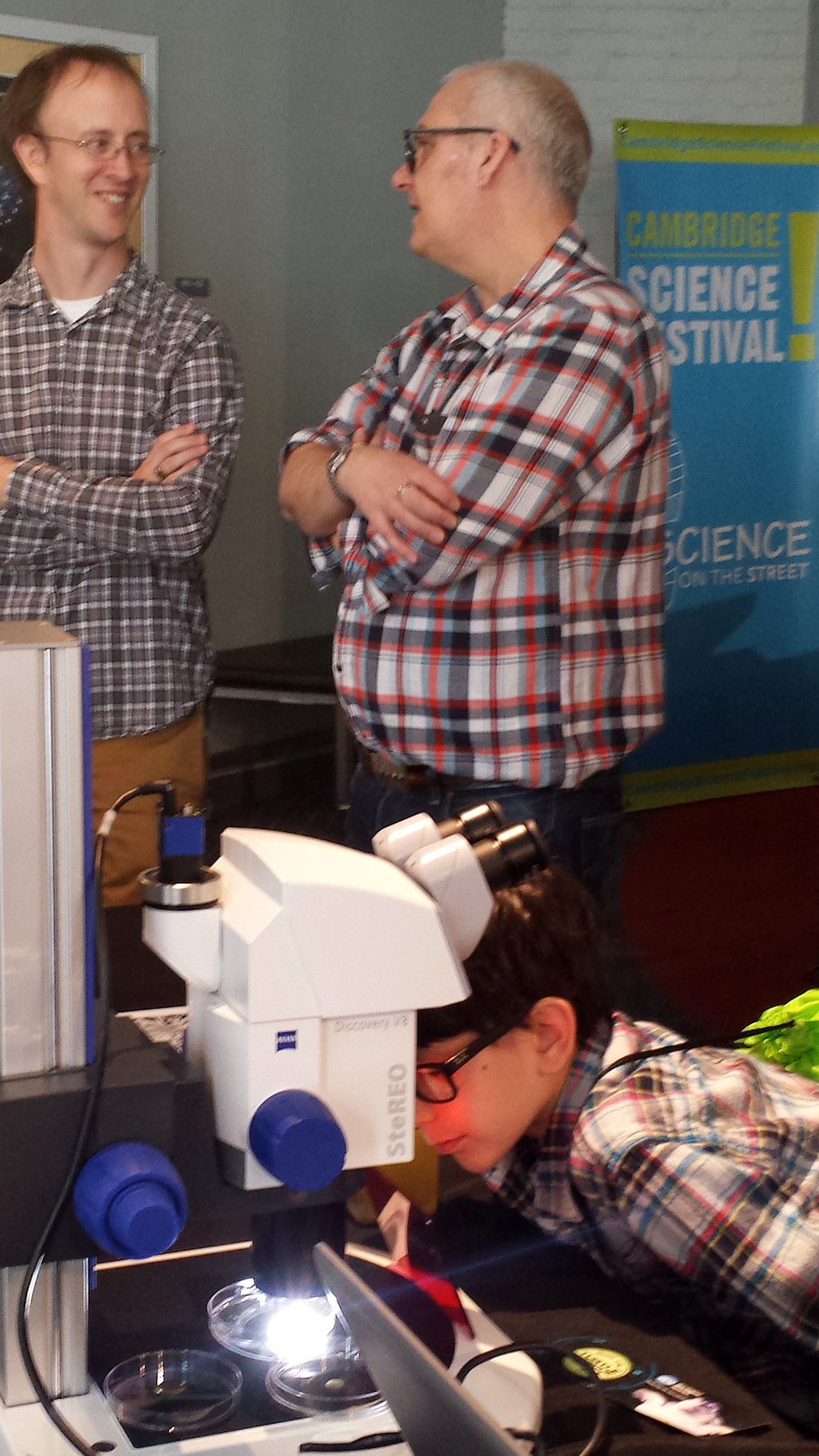WHOI Stories
-
WHOI News | August 17, 2015
New AUV Plankton Sampling System Deployed
Researchers and engineers have developed and tested an innovative new system for sampling small planktonic larvae in coastal ocean waters and understanding their distribution. -
WHOI News | August 13, 2015
Heat Release from Stagnant Deep Sea Helped End Last Ice Age
The build-up and subsequent release of warm, stagnant water from the deep Arctic Ocean and Nordic Seas played a role in ending the last Ice Age within the Arctic region, according to new research led by an international team of scientists. -
WHOI News | August 11, 2015
Ultrasounds for Coral Reefs?
Scientists have tested a surprisingly cheap and effective way to assess the health of vulnerable coral reefs and to monitor threats on remote atolls: eavesdropping. -
WHOI News | July 17, 2015
‘Plankzooka’ Larval Sampler May Revolutionize Deep-Ocean Research
Scientists have successfully conducted the first high-volume collection of plankton, including animal larvae, from the deep ocean using a new sampling device mounted on a robotic submarine. -
WHOI News | July 16, 2015
Carbon Dioxide Pools Discovered in Aegean Sea
The waters off Greece’s Santorini are the site of newly discovered opalescent pools forming at 250 meters depth. The interconnected series of meandering, iridescent white pools contain high concentrations of CO2 and may hold answers to questions ... -
WHOI - Oceanus | July 8, 2015
Coral Crusader
Student seeks clues to conserve beleaguered reefs -
WHOI News | July 8, 2015
Where Iron and Water Mix
New research proves that the dissolved metals from hydrothermal plumes follow deep-sea currents to provide a major source of iron to the world's oceans. -
WHOI News | July 7, 2015
Deep-Sea Images Give New View of Arctic Ocean Methane Seeps
WHOI scientists and colleagues from the Centre for Arctic Gas Hydrate, Environment and Climate in Norway collected nearly 30,000 high definition images at known methane release sites in the Arctic Ocean. The detailed images will provide new insights in... -
WHOI News | June 8, 2015
Making Organic Molecules in Hydrothermal Vents in the Absence of Life
A new study is the first to show that methane formation does not occur during the relatively quick fluid circulation process. -
WHOI News | June 5, 2015
Diverse Corals Persist, But Bioerosion Escalates in Palau’s Low-pH Waters
As the ocean absorbs atmospheric carbon dioxide (CO2) released by the burning of fossil fuels, its chemistry is changing, lowering its pH in a process known as ocean acidification. This process also removes carbonate ions, an essential ingredient neede... -
WHOI News | June 3, 2015
Sudden Draining of Glacial Lakes Explained
Scientists have found a surprising mechanism that triggers the abrupt draining of glacial lakes atop the Greenland Ice Sheet. -
WHOI News | May 14, 2015
Revealing the Ocean’s Hidden Fertilizer
Phosphorus is one of the most common substances on Earth. An essential nutrient for every living organism—humans require approximately 700 milligrams per day—we are rarely concerned about consuming enough of it because it is present in most... -
WHOI News | May 13, 2015
Study Reveals How Rivers Regulate Global Carbon Cycle
Scientists from WHOI calculated the first direct estimate of how much and in what form organic carbon is exported to the ocean by rivers. -
WHOI - Oceanus | May 11, 2015
A Green Thumb for Ocean Microbes
Growing marine bacteria in the laboratory is a challenge -
WHOI News | May 6, 2015
Securing the Supply of Sea Scallops for Today and Tomorrow
Good management has brought the $559 million United States sea scallop fishery back from the brink of collapse over the past 20 years. However, its current fishery management plan does not account for longer-term environmental change like ocean warming... -
WHOI News | April 27, 2015
Ocean Bacteria Get ‘Pumped Up’
Scientists have discovered a surprising new short-circuit to the biological pump. Sinking particles of stressed and dying phytoplankton release chemicals that can have a jolting, steroid-like effect on marine bacteria feeding on the particles. -
WHOI News | April 13, 2015
Coexisting in a Sea of Competition
Diversity of life abounds on Earth, and there's no need to look any farther than the ocean's surface for proof. There are over 200,000 species of phytoplankton alone, and all of those species of microscopic marine plants that form the base of the marin... -
WHOI News | April 6, 2015
Trace Amounts of Fukushima Radioactivity Detected Along Shoreline of British Columbia
Scientists at WHOI have for the first time detected the presence of small amounts of radioactivity from the 2011 Fukushima Dai-ichi Nuclear Power Plant accident in a seawater sample from the shoreline of North America. -
WHOI News | March 26, 2015
Swirling Currents Deliver Phytoplankton Carbon to Ocean Depths
Just as crocus and daffodil blossoms signal renewal and the start of a warmer season on land, a similar "greening" event—a massive phytoplankton bloom—unfolds each spring in the Atlantic Ocean from Bermuda to the Arctic. But, what hap... -
WHOI News | March 10, 2015
Research Submersible Alvin Completes Depth Certification to 4500 Meters
The submersible Alvin has achieved certification from the U. S. Naval Sea Systems Command (NAVSEA) for operations to its rated depth of 4,500 meters (approx. 2.8 miles).






